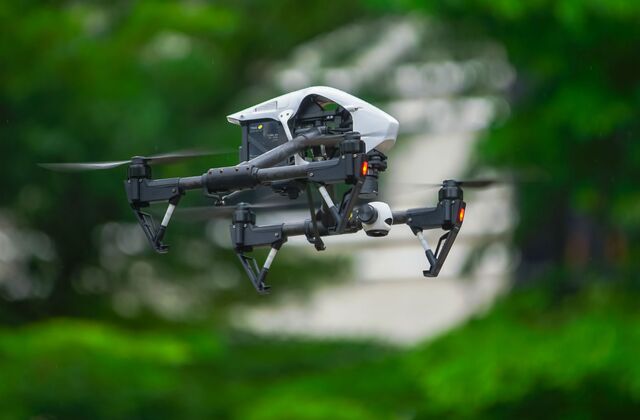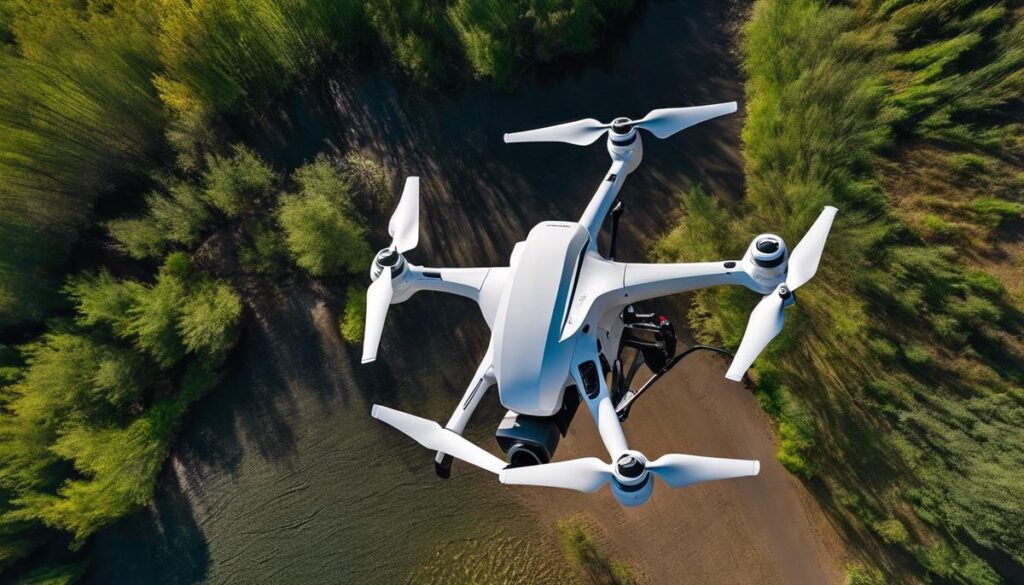Introduction to Police Drones
Police drones, also known as unmanned aerial vehicles (UAVs), are becoming increasingly popular tools for law enforcement agencies around the world.
These advanced systems offer a range of benefits to police officers, including the ability to cover large areas quickly and efficiently during search and rescue operations, track and follow individuals or vehicles on the move, assess dangerous situations from a distance, monitor traffic and large crowds, and gather evidence at crime scenes.
Keeping Police Safe with Drones
One of the main advantages of police drones is their ability to keep officers out of harm’s way while still gathering valuable situational awareness. For example, drones can be used to monitor traffic stops, active shooter scenes, and other high-risk situations, allowing officers to maintain a safe distance while still gathering important information.
This not only helps to keep officers safe, but it can also help to de-escalate potentially volatile situations by allowing officers to gather more information before making any decisions.
Advanced Sensors and Cameras Drones can also be equipped with advanced sensors and cameras, such as thermal imaging and object tracking capabilities, which can be useful in a variety of law enforcement scenarios. For example, thermal imaging cameras can allow officers to spot lost or missing people hidden under debris or undergrowth, even at night, while object tracking capabilities can help officers follow and monitor suspects on the run.

Other Applications
In addition to these benefits for police, drones can also be useful in a variety of other scenarios, such as border patrol, disaster response, and crowd control. For example, drones can be used to monitor large crowds at events, allowing officers to identify any potential issues before they escalate.
They can also be used to patrol borders and other large areas, helping to identify and deter illegal activities such as smuggling or illegal immigration. In the event of a natural disaster, drones can be used to assess the damage and help with rescue and recovery efforts.
Efficiency and Cost-Effectiveness
One of the key benefits of police drones is their ability to cover large areas quickly and efficiently. This can be especially useful in search and rescue operations, where time is of the essence.
Drones can cover large areas in a fraction of the time it would take officers on foot or in vehicles, allowing them to locate missing or lost people much more quickly. Drones can also access locations that may be difficult for people or other aircraft to reach, such as under tree cover or between buildings.
Not to mention that drones can be incredibly fast too, check out our recent article on some of the Fastest Drones for 2023.
Why should the police use drones?
In addition to their speed and efficiency, police drones are also relatively cost-effective compared to other options. For example, using a helicopter or other manned aircraft for search and rescue or surveillance operations can be expensive, especially if the mission requires multiple flights. In contrast, drones are much cheaper to operate, making them a more cost-effective option for many law enforcement agencies.
They are already being used by many police departments all over the world check out this article by the Los Angeles Daily News on LA police using drones.

Photo from https://dronedj.com/
What information do Police collect with drones?
Another key benefit of police drones is their ability to gather detailed information about a given situation. With advanced sensors and cameras, drones can provide high-resolution images and video footage that can be used to assess a situation and gather evidence.
This can be especially useful in crime scene investigations, where drones can provide an aerial view of the scene, allowing investigators to gather detailed information about the layout of the area and gather evidence that may be difficult to access from the ground.
Conclusion to Police Drones
Overall, police drones are a powerful tool that can help law enforcement agencies to better serve their communities. With their ability to cover large areas quickly and efficiently, gather detailed information about a given situation, and keep officers out of harm’s way, drones are a valuable asset for any law enforcement agency.
As the use of drones in law enforcement continues to grow, it is likely that they will become an increasingly important tool for police departments around the world.
Police drones offer a range of benefits to law enforcement agencies, including the ability to cover large areas quickly and efficiently during search and rescue operations, track and follow individuals or vehicles on the move, assess dangerous situations from a distance, monitor traffic and large crowds, and gather evidence at crime scenes.
Police drones can be used to monitor traffic stops, active shooter scenes, and other high-risk situations, allowing officers to maintain a safe distance while still gathering important information. This helps to keep officers safe and can also help to de-escalate potentially volatile situations.
Police drones can be equipped with a variety of advanced sensors and cameras, such as thermal imaging cameras, object tracking capabilities, and high-resolution cameras. These sensors and cameras can be useful in a variety of law enforcement scenarios, such as search and rescue operations, suspect tracking, and crime scene investigation.
In addition to the main benefits of police drones, they can also be useful in a variety of other scenarios, such as border patrol, disaster response, and crowd control. For example, drones can be used to monitor large crowds at events, patrol borders and other large areas, and assess the damage caused by natural disasters.
Police drones are relatively cost-effective compared to other options, such as helicopters or other manned aircraft, which can be expensive to operate, especially if multiple flights are required. Drones are much cheaper to operate, making them a more cost-effective option for many law enforcement agencies.
Police drones can be equipped with advanced sensors and cameras, such as high-resolution cameras, which allow them to gather detailed information about a given situation. This can be especially useful in crime scene investigations, where drones can provide an aerial view of the scene, allowing investigators to gather detailed information about the layout of the area and gather evidence that may be difficult to access from the ground.
Originally posted 2022-12-22 17:21:36.



